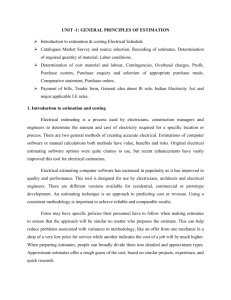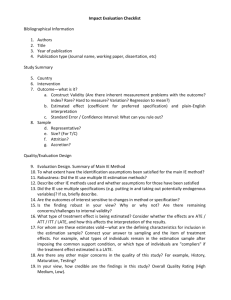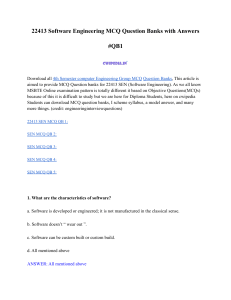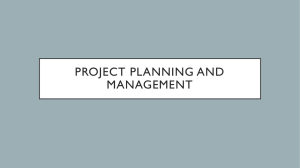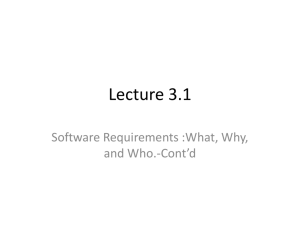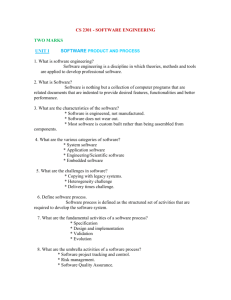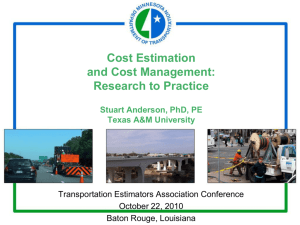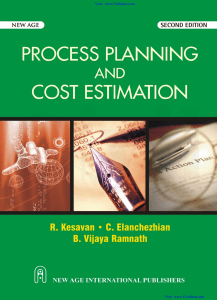Cost Estimation
advertisement
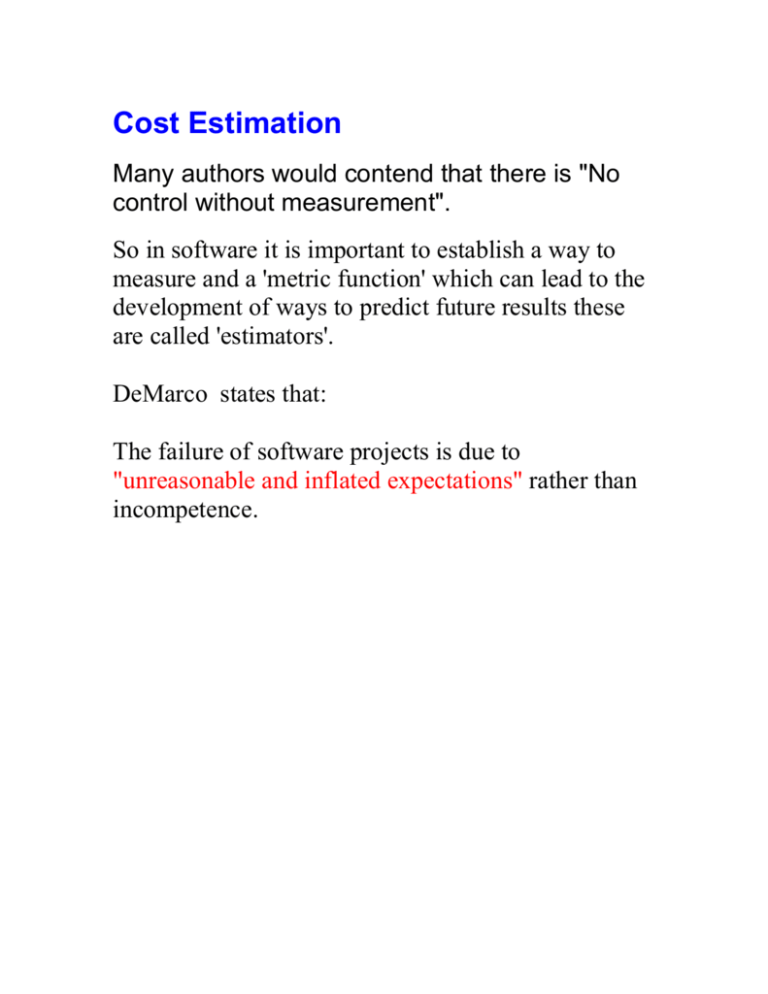
Cost Estimation Many authors would contend that there is "No control without measurement". So in software it is important to establish a way to measure and a 'metric function' which can lead to the development of ways to predict future results these are called 'estimators'. DeMarco states that: The failure of software projects is due to "unreasonable and inflated expectations" rather than incompetence. Bad Estimation is due to: 1. No development of estimating expertise. 2. No attempt to offset bias.(Ego involvement) 3. No understanding of a 'reasonable' estimate. Median rather than the mean. 4. Political problems. 5. Not based on past performance. (Poor data collection) Estimate: Not a guess in that it is based on an estimating method. 1.Deemed successful if it is +/- 30% of final cost. 2.Method allows refinement during the lifecycle. 3.Easy to use for estimator. 4. Rules are understood by all concerned. 6. Supported by tools and documented. 7. Estimating process can be trusted by teams and management. Phases of Product Life-Cycle and Estimates. 1. Product planning. A. Conceptual Planning. Based on perceived 'requirements' Product proposal produced. - Rough analysis of concept to enable sizing. B. Product definition. Product functional specification prepared. Product plan set up. - Includes estimates of time and cost, more accurate and taking account of management constraints. Uncertainty and often iteration. 2. Product development C. System Design Staffed based on development plan System architecture is established. Subsystem specification is produced. - Estimates important in hardware/software trade-offs. - -Accurate enough to schedule end of development after a preliminary design review. D. Sub-system design Specification and design of sub-functions and modules - Critical Design reviews. - Refinement of cost and time estimates and decision made on continuing project. E. Implementation Coding, integration and testing. - New estimate made at first code complete stage so that end of user-orientated system test can be predicted. - Estimate used for monitoring progress, assessment can be made of method itself. 3. Product Availability. F. Product qualification. -Beta test sites - Monitoring allows estimate of time when product will have full operational capability. G. Product maintenance and manufacturing. - Estimates used for predicting development of product variants and modifications. 4. Product Termination. Who estimates ? A "consulting estimator" Someone who is external to the project. Trying to avoid problems associated with: Managers: Estimation Contract Negotiation Based on the political pressure of the project. Analysts and engineers: Optimism. Based on the minimum cost/time pressure. Developers: Estimation viewed as a measure of your enthusiasm Measurement Baseline Project should have: 1. Project Journal. (written by project manager) - details of personnel (experience etc.); methods and tools; customer relationships; decisions taken; observed results etc. - (in large projects team leader log books should also exist) 2. Project Data. A. Specification. - Number of functions - Methods used - Supporting tools - Depending on method; number of states, invariants, operations, functions. - Number and types of defects detected during reviews - Labour (number of analysts, person.hours, elapsed time) B. Design - Similar to specification except based on modules or classes. C. Implementation - Main measure is based on executable lines of code (ELOCs) also known as non-commentary source statements (NCSSs) - Also want defects and labour per module or class. D. Unit testing. - size - - defects; types; number; cost to repair. E. Integration and system testing. - Again defects and labour cost. As an example based on extensive data Putnam provides the following figures for the life-cycle. % time spent on phases Higher Specifi Design Code level cations Spec. 8 9 16 17 Unit test 25 Higher level test 25 This "profile" of a project can be used together with the estimates to monitor progress. This is a useful approach that can be built up simply by a company once the data has been collected.


